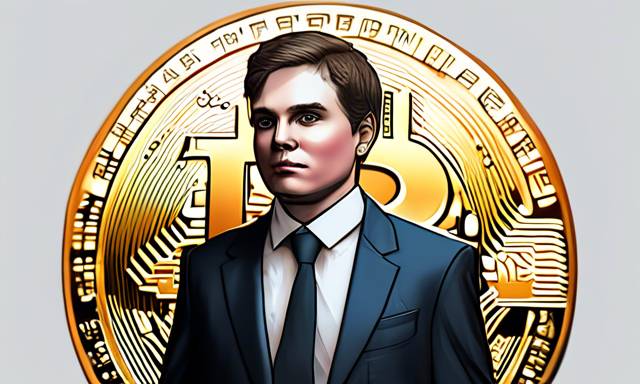Financial Insights in a Volatile Market 💼
Renowned hedge fund manager Paul Tudor Jones has responded to economic uncertainties by allocating his investments across Bitcoin, gold, commodities, and technology stocks. His decision arises from apprehensions about escalating inflation as we approach the upcoming elections. In light of the current economic climate, he has deliberately avoided fixed-income assets.
Inflation Trends: Understanding the Rise 📈
Inflation reached a worrying peak of 9.1% in June 2022, attributed to the aftermath of the COVID-19 pandemic and subsequent economic responses. To tackle soaring inflation, the U.S. Federal Reserve has tightened its monetary policy, significantly raising interest rates.
Throughout 2022 and 2023, the Federal Reserve raised rates a total of 11 times. As of July 2023, interest rates have remained stable between 5.25% and 5.50%.
The Fed aims for a 2% inflation rate annually. In August this year, the annual inflation rate in the United States dropped to 2.5%, marking the lowest level since February 2021. Following this decrease, the Fed responded with a notable 50-basis-point cut in September, with rates now situated between 4.75% and 5%. This adjustment marked the Federal Reserve’s first interest reduction since the pandemic began.
Challenging Perspectives on Economic Statistics 📉
As of September, the “official inflation” in the U.S. recorded a decrease to 2.4% for the previous year. While it may appear that the Federal Reserve is on track to achieve its 2% target, Jones expresses concerns that increasing government expenditures and tax cuts might complicate this pathway.
Current forecasts reveal that the anticipated inflation rate for the upcoming year stands at 3.0%. Jones remarks on the seriousness of national spending habits, stating, “We’re going to be broke really quickly unless we get serious about dealing with our spending issues.” The Congressional Budget Office foresees a federal budget deficit of $1.9 trillion for fiscal year 2024, which is expected to escalate to $2.8 trillion by 2034.
The combination of economic pressures and rising geopolitical tensions prompts many investors to consider alternative assets, such as gold and Bitcoin, as protective measures against currency volatility. Analysts from JPMorgan have noted a growing trend where investors perceive gold and Bitcoin as safe-haven investments amidst economic uncertainty.
Gold Prices Hit New Heights 🌟
Recently, gold reached an unprecedented price of $2,740. Meanwhile, Bitcoin also witnessed a surge, peaking at $69,500 this week, according to CoinGecko data. However, the cryptocurrency has since retraced to around $67,300.
Market experts foresee potential short-term corrections due to ongoing geopolitical tensions that show no sign of abating. Historical trends indicate that Bitcoin typically experiences a dip in response to such pressures, although it often rebounds afterward.
The dynamics of the Bitcoin market are further influenced by the forthcoming U.S. presidential election. Analysts from Standard Chartered predict that Bitcoin may reclaim its previous record high before a new president is determined.
Contrasting Views from the IMF 💭
In contrast to Jones’s perspective, the chief economist of the International Monetary Fund, Pierre-Olivier Gourinchas, claims that the fight against inflation is nearing a conclusion. After the release of the World Economic Outlook report, Gourinchas projected a decline in global inflation by the end of 2025, driven by the resilience of the global economy.
This anticipated reduction in inflation is perceived as beneficial, potentially leading to decreased interest rates and enhanced economic growth. However, Gourinchas cautioned that various risks may prevent this optimistic outlook from materializing.
While the IMF acknowledges improvements in the current situation, they maintain a cautious stance, noting a weakened global economic outlook. Growth projections for numerous countries have been adjusted downward amid challenges such as international conflicts and fluctuating commodity prices.
The IMF advocates for a “policy triple pivot” designed to navigate these hurdles and facilitate a transition to lower inflation. This approach includes recalibrating interest rates, optimizing government expenditure, and implementing reforms aimed at boosting productivity.
Hot Take on Current Economic Strategies 🔥
The financial landscape remains uncertain as various factors influence market behaviors. Investors are adapting by diversifying their asset allocations and looking for safe havens amidst inflation worries and geopolitical strife. Vigilance in monitoring economic indicators and strategic planning will be crucial for navigating the complexities ahead.




 By
By
 By
By

 By
By

 By
By